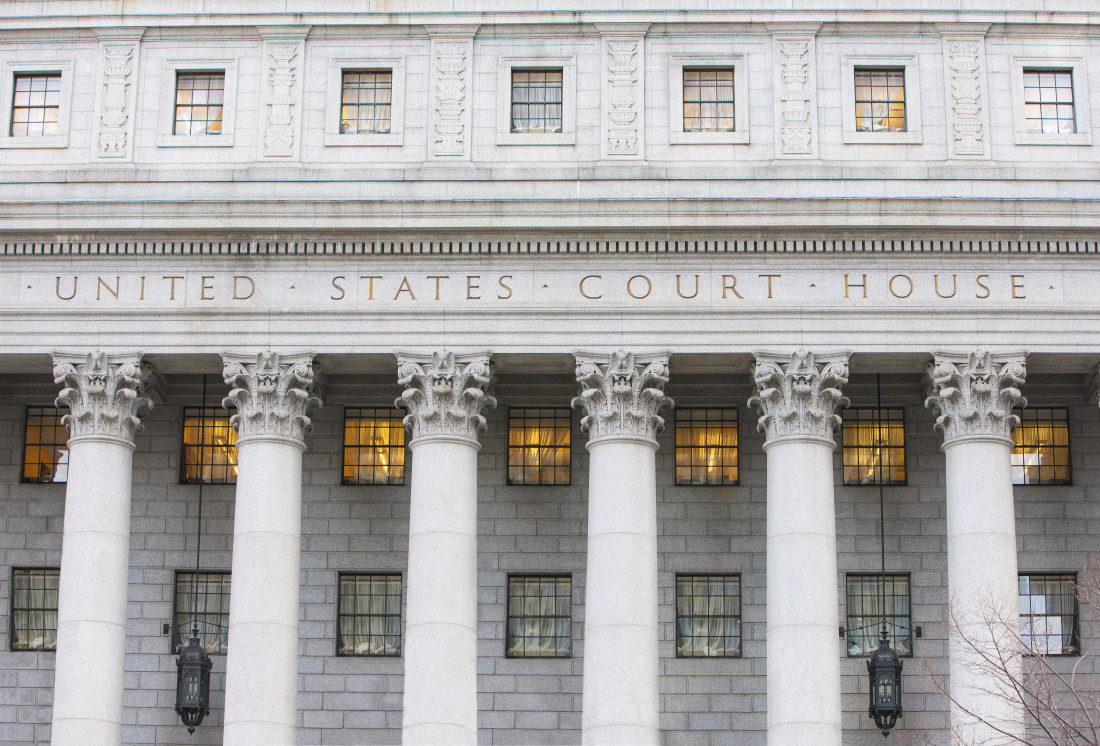Litigation Law Alert - U.S. Supreme Court Rejects “Defense Preclusion”

If you fail to pursue a possible defense in a case, are you necessarily precluded from asserting it in all later cases involving the same parties and similar issues? The U.S. Supreme Court said “No” in Lucky Brand Dungarees, Inc. v. Marcel Fashions Grp., Inc., 590 U.S. ____,No. 18-1086, 2020 U.S. LEXIS 2642 (May 14, 2020).
2001 Suit
In 2001, Marcel Fashions Group, Inc. (Marcel) sued Lucky Brand Dungarees, Inc. (Lucky Brand), alleging that Lucky Brand’s use of the phrase “Get Lucky” infringed Marcel’s GET LUCKY trademark. The two parties entered into a settlement agreement in 2003, whereby Lucky Brand agreed to stop using the phrase “Get Lucky” and Marcel agreed to release Lucky Brand from claims regarding use of its trademarks.
2005 Suit
In 2005, Lucky Brand sued Marcel, alleging that Marcel violated Lucky Brand’s trademarks by copying its designs and logos in a new clothing line. Marcel filed counterclaims based on Lucky Brand’s alleged continued use of the phrase “Get Lucky,” and alleged that the use of the phrase “Get Lucky,” in conjunction with Lucky Brand’s trademarks, caused consumer confusion and infringed Marcel’s GET LUCKY trademark. Notably, none of Marcel’s counterclaims in the 2005 suit alleged that Lucky Brand’s trademarks on their own, (i.e. without the phrase “Get Lucky”) infringed Marcel’s GET LUCKY trademark.
2011 Suit
In 2011, Marcel filed another action against Lucky Brand claiming that Lucky Brand continued to infringe Marcel’s GET LUCKY trademark. The infringement was based solely on Lucky Brand’s use of trademarks, and not on the use of the phrase “Get Lucky.”
The Release Defense
During the 2005 litigation, Lucky Brand raised the defense that Marcel’s counterclaims were barred because of the release in the 2003 settlement agreement. The defense was not fully litigated in the 2005 action. In 2011, Lucky Brand again moved to dismiss Marcel’s claims based on the release in the settlement agreement. Marcel argued that Lucky Brand could not invoke the release defense because it could have been litigated in the 2005 action and thus was barred by the standalone principle of “defense preclusion.” Marcel argued that Lucky Brand was able to pursue the release defense in the 2005 litigation but chose not to.
The Lower Court Decisions
The District Court granted Lucky Brand’s motion to dismiss. The Second Circuit vacated and remanded, concluding that “defense preclusion” prohibited Lucky Brand from raising an un-litigated defense that it should have pursued earlier. Lucky Brand took the case to the Supreme Court.
The Supreme Court Decision
The issue before the Supreme Court was whether Lucky Brand was barred from raising a previously raised but not litigated defense. In a unanimous decision written by Justice Sotomayor, the Supreme Court held that Lucky Brand was not barred from raising the release defense in the 2011 litigation.
The Court reasoned that since “the two suits here were grounded on different conduct, involving different marks, occurring at different times …[t]hey thus did not share a ‘common nucleus of operative facts.’…The 2011 Action did not imperil the judgment of the 2005 Action because the lawsuits involved both different conduct and different trademarks” – here, Lucky Brand’s trademarks versus Lucky Brand’s use of the phrase “Get Lucky”.
The Court went further to say that the conduct in the 2011 complaint occurred after the conclusion of the 2005 litigation, and claim preclusion generally “does not bar claims that are predicated on events that postdate the filing of the initial complaint” citing Whole Woman's Health v. Hellerstedt, 136 S. Ct. 2292, 2296 (2016). The Court noted that, especially in the context of trademark liability, “the enforceability of a mark and likelihood of confusion between marks often turns on extrinsic facts that change over time.”
Justice Sotomayor also said that the Court has never explicitly recognized “defense preclusion” as a standalone category of res judicata. Rather it is discussed within the context of the two categories of res judicata namely, issue preclusion (sometimes called collateral estoppel, which precludes a party from relitigating an issue actually decided in a prior case and necessary to the judgment) and claim preclusion (sometimes called res judicata, which precludes a party from raising an issue that could have been raised and decided in a prior action—even if not actually litigated.) “It is no surprise, then, that the Second Circuit held that Marcel’s 2011 Action claims were not barred by the 2005 Action. By the same token, the 2005 Action could not bar Lucky Brand’s 2011 defenses.”
For further information, contact Reema Pangarkar or your CLL attorney.
Reema Pangarkar

Associate
Email | 212.790.9229
Reema’s practice focuses on trademark prosecution, clearance, and maintenance, as well as general intellectual property matters.